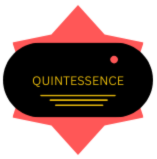Parsing is a fundamental concept in computer science and linguistics, referring to the process of analyzing a sequence of symbols, either in natural language or in programming languages, to extract meaningful information. At its core, parsing involves breaking down complex structures into simpler components, allowing for easier interpretation and manipulation. In the context of programming, parsing is essential for compilers and interpreters, which need to understand the syntax and semantics of code to execute it correctly.
For instance, when a programmer writes a line of code, the parser reads it and determines its grammatical structure, identifying elements such as variables, operators, and control flow statements. In natural language processing (NLP), parsing plays a crucial role in understanding human language. It involves analyzing sentences to determine their grammatical structure, which can include identifying parts of speech, phrases, and clauses.
This is particularly important for applications like machine translation, sentiment analysis, and chatbots, where understanding the nuances of language is vital for accurate communication. For example, consider the sentence “The cat sat on the mat.” A parser would break this down into its components: identifying “The cat” as the subject, “sat” as the verb, and “on the mat” as a prepositional phrase. This structural understanding enables further processing, such as extracting meaning or generating responses.
Key Takeaways
- Grasp fundamental parsing concepts to build a strong foundation.
- Select appropriate parsing tools based on your specific needs and data types.
- Explore various parsing methods, including top-down and bottom-up approaches.
- Enhance skills through hands-on exercises and real-world problem solving.
- Utilize advanced techniques and resources to tackle complex parsing challenges.
Choosing the Right Parsing Tool
Selecting an appropriate parsing tool is critical for effectively implementing parsing in any project. The choice of tool often depends on the specific requirements of the task at hand, including the complexity of the data being parsed and the programming language being used. There are numerous parsing libraries and frameworks available, each with its strengths and weaknesses.
For instance, in Python, libraries like Beautiful Soup and lxml are popular for parsing HTML and XML documents. Beautiful Soup is particularly user-friendly and excels at navigating complex document structures, making it ideal for web scraping tasks. On the other hand, if one is working with programming languages or structured data formats like JSON or XML, tools such as ANTLR (Another Tool for Language Recognition) or PLY (Python Lex-Yacc) may be more suitable.
ANTLR is a powerful parser generator that can create parsers for various languages from a formal grammar specification. It supports multiple output languages and provides features like error handling and tree construction. PLY, while simpler, offers a straightforward approach to building parsers using Python’s capabilities.
The decision on which tool to use should also consider factors such as community support, documentation quality, and ease of integration into existing workflows.
Learning the Different Types of Parsing

Parsing can be categorized into several types based on the approach taken to analyze the input data. The two primary categories are top-down parsing and bottom-up parsing. Top-down parsing begins with the highest-level structure and works its way down to the individual components.
This method is often implemented using recursive descent parsers, which utilize a set of recursive functions to process input according to a defined grammar. For example, a top-down parser might start with a sentence structure and recursively break it down into noun phrases and verb phrases until it reaches individual words. Conversely, bottom-up parsing starts with the input symbols and combines them to form higher-level structures.
This approach is commonly used in shift-reduce parsers, which maintain a stack of symbols and apply reduction rules to build up the parse tree. An example of this would be taking individual words from a sentence and gradually combining them into phrases and ultimately into a complete sentence structure. Each type of parsing has its advantages; top-down parsers are generally easier to implement and understand, while bottom-up parsers can handle more complex grammars and are often more efficient in terms of memory usage.
Practicing with Simple Parsing Exercises
To gain proficiency in parsing, engaging in practical exercises is essential. Beginners can start with simple tasks such as parsing CSV (Comma-Separated Values) files or basic JSON data structures. For instance, consider a CSV file containing information about students: names, ages, and grades.
A straightforward exercise would involve writing a parser that reads this file line by line, splits each line by commas, and stores the resulting data in a structured format like a list of dictionaries in Python. This exercise not only reinforces basic parsing concepts but also familiarizes learners with handling real-world data formats. Another effective practice exercise involves creating a simple arithmetic expression parser.
This could involve writing code that takes an input string representing a mathematical expression (e.g., “3 + 5 * (2 – 8)”) and parses it to evaluate the result. By implementing this parser, learners can explore concepts such as operator precedence and parentheses handling while applying their knowledge of parsing techniques. These exercises serve as foundational experiences that build confidence and competence in parsing before tackling more complex scenarios.
Troubleshooting Common Parsing Errors
| Metric | Description | Typical Value | Unit |
|---|---|---|---|
| Parsing Speed | Number of tokens parsed per second | 10,000 – 1,000,000 | tokens/second |
| Parse Tree Depth | Maximum depth of the parse tree generated | 5 – 50 | levels |
| Error Rate | Percentage of parsing errors in input data | 0.1 – 5 | % |
| Memory Usage | Amount of memory used during parsing | 10 – 500 | MB |
| Latency | Time taken to parse a single input | 1 – 100 | milliseconds |
| Supported Languages | Number of programming or markup languages supported | 1 – 50 | languages |
| Ambiguity Rate | Percentage of inputs resulting in ambiguous parses | 0 – 2 | % |
As with any programming task, errors are an inevitable part of the parsing process. Understanding common parsing errors can significantly enhance one’s ability to debug and refine parsers effectively. One frequent issue arises from syntax errors in the input data.
For example, if a JSON file is missing a closing brace or contains an unexpected comma, the parser will fail to interpret it correctly. To address this, developers should implement robust error handling mechanisms that provide informative feedback about the nature of the error and its location within the input. Another common challenge is dealing with ambiguous grammars that can lead to multiple valid parse trees for a single input string.
To mitigate this issue, one approach is to refine the grammar by introducing additional rules or constraints that clarify how certain constructs should be parsed.
Applying Advanced Parsing Techniques

Once foundational parsing skills are established, exploring advanced techniques can further enhance one’s capabilities. One such technique is using parser combinators, which allow developers to build complex parsers by combining simpler ones in a modular fashion. This approach promotes code reusability and clarity by enabling developers to define small parsers for specific tasks and then combine them to handle more intricate structures.
For instance, one could create parsers for individual tokens like numbers or operators and then combine them to parse entire mathematical expressions. Another advanced technique involves utilizing abstract syntax trees (ASTs) to represent parsed data structures more effectively. An AST provides a hierarchical representation of the syntactic structure of source code or data, abstracting away unnecessary details while preserving essential relationships between components.
This representation is particularly useful in compiler design, where it serves as an intermediate step between parsing source code and generating executable code. By applying these advanced techniques, developers can create more efficient and maintainable parsers capable of handling complex data structures.
Using Parsing in Real-World Applications
Parsing has numerous real-world applications across various domains, demonstrating its versatility and importance in technology today. In web development, for instance, parsing is integral to web scraping—extracting data from websites for analysis or integration into other applications. Tools like Beautiful Soup allow developers to navigate HTML documents easily, enabling them to gather information such as product prices or user reviews from e-commerce sites efficiently.
In natural language processing applications, parsing is crucial for tasks such as sentiment analysis or chatbot development. By accurately parsing user input, chatbots can understand user intent and respond appropriately. For example, if a user types “I want to book a flight,” an effective parser would identify key components like “book” (the action) and “flight” (the object), allowing the chatbot to initiate the booking process seamlessly.
Similarly, sentiment analysis relies on parsing text to identify positive or negative sentiments expressed within sentences, enabling businesses to gauge customer feedback effectively.
Resources for Further Learning and Practice
For those looking to deepen their understanding of parsing techniques and applications, numerous resources are available that cater to various learning styles. Online platforms like Coursera and edX offer courses on natural language processing that include modules on parsing techniques within broader contexts. These courses often feature hands-on projects that allow learners to apply their knowledge practically.
Books such as “Compilers: Principles, Techniques, and Tools” by Alfred
Engaging with these resources not only enhances theoretical knowledge but also provides practical experience through exercises and real-world applications that reinforce learning outcomes effectively.
Parsing is a crucial aspect of understanding language and logic, and it often intersects with philosophical theories. For those interested in the foundational concepts of meaning and reference, a related article that delves into the theories of Frege and Russell is available at





















+ There are no comments
Add yours